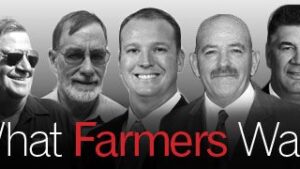It seems like every day there’s a new headline that highlights tough times for the U.S. row crop seed industry. Just the past two weeks have featured a U.S. Department of Agriculture crop report that expects a decline of more than 6 million acres of the major row crops and government action (or inaction) that is taking the wind out of the sails of the sustainable aviation fuel market. Anyone remember when we were supposed to need 40 million more acres of soybeans and 100 million acres of corn?
It’s probably not surprising then that large seed companies have reduced staff, cut research budgets and closed facilities.
Some of the macro trends are quite concerning. Highly productive agricultural land is being covered by solar panels. Chinese demand is falling due to a slowing economy. Soybeans from Brazil are showing up on the East Coast of the US because they are cheaper than beans grown in Delmarva.
For all those same reasons, I could not be more optimistic about the future.
American farmers producing undifferentiated commodities is a vast under-utilization of our incredibly skilled farmers and world-leading infrastructure. The United States produces some of the highest quality grain in the world; it’s time real premiums are earned for that effort.
Dozens of new innovators are bringing genetics to the market with higher quality oil, more protein, better nutritional profiles and other value-added characteristics that benefit end-users and consumers. New seed developers and breeders are bringing elite products to market at price points that give seed companies and farmers more margin opportunity and a chance to offer unique products. On-seed and in-seed enhancements are offering yield and vigor bumps.
In short, doing something different is becoming the norm.
And when the sands of a marketplace shift, the quick and nimble outmaneuver the slow and cumbersome.
This is where partnerships and relationships become incredibly important. Companies need to expand their networks, increase the products they test and flip over every rock they see. Go or no-go decisions need to be made fast and no options can be off the table. Everything, from internal structure, products offered and geographies served should be reviewed. If something isn’t working, stop doing it. Check the entire dam for margin leakage and plug as many holes as you can. Everything needs to be done quickly!
The companies that do this kind of self-assessment honestly and transparently will uncover the opportunities and pathways for the future. Those that execute the new strategy will find themselves at the forefront of the future US row crop market. It’s go time!









